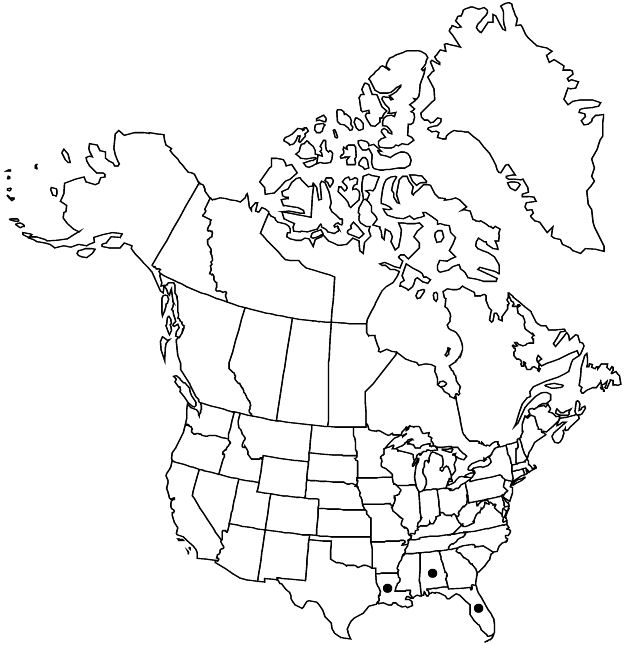Difference between revisions of "Acalypha alopecuroidea"
Collectanea 3: 196. 1791.
imported>Volume Importer |
imported>Volume Importer |
||
| Line 53: | Line 53: | ||
|publication year=1791 | |publication year=1791 | ||
|special status=Introduced | |special status=Introduced | ||
| − | |source xml=https:// | + | |source xml=https://bitbucket.org/aafc-mbb/fna-data-curation/src/2e0870ddd59836b60bcf96646a41e87ea5a5943a/coarse_grained_fna_xml/V12/V12_539.xml |
|genus=Acalypha | |genus=Acalypha | ||
|species=Acalypha alopecuroidea | |species=Acalypha alopecuroidea | ||
Latest revision as of 19:16, 5 November 2020
Herbs, annual, 2–6 dm, monoecious. Stems erect, short-pubescent and stipitate-glandular. Leaves: petiole 0.5–7 cm, stipitate-glandular; blade ovate to broadly ovate, 2–8 × 1.5–5 cm, base rounded or subcordate, margins serrate, apex acuminate. Inflorescences unisexual, axillary (staminate) and terminal (pistillate); staminate peduncle 0.1–0.6 cm, stipitate-glandular, fertile portion 0.2–0.8 cm; pistillate peduncle 0.2–1 cm, stipitate-glandular, fertile portion 2–6 × 0.8–1.5 cm; allomorphic pistillate flowers common, terminal on pistillate or, rarely, staminate inflorescences. Pistillate bracts (normal flowers) crowded (inflorescence axis not visible between bracts), 8–12 × 3–4 mm, abaxial surface long-hirsute (hairs to 2 mm) and stipitate-glandular; lobes 3–5, proximally deltate with linear tips, 3/4 bract length, smooth; of allomorphic flowers absent. Pedicels of allomorphic flowers 5–15 mm. Pistillate flowers: pistil 3-carpellate (normal flowers), 1(–2)-carpellate (allomorphic flowers); styles unbranched or rarely 2-fid. Capsules smooth, pubescent and stipitate-glandular or glabrate; allomorphic fruits obovoid, 1–1.5 × 0.9–1.2 mm, muricate, hirsute. Seeds 1–1.1 mm, minutely pitted.
Phenology: Flowering and fruiting late summer–fall.
Habitat: Disturbed areas.
Elevation: 0–40 m.
Distribution

Introduced; Ala., Fla., La., Mexico, West Indies, Central America, n South America.
Discussion
Acalypha alopecuroidea has been established in the United States since at least the 1950s.
Selected References
None.